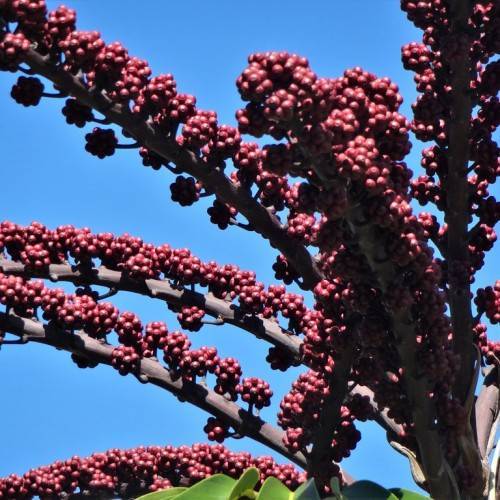
octopus tree
Schefflera actinophylla
Cycle:
Perennial
Watering:
Average
Hardiness Zone:
10 - 12
Flowers:
Flowers
Sun:
full sun
Soil:
Well-drained
Fruits:
Fruits Ready In Summer
Leaf:
Yes
Growth Rate:
Moderate
Maintenance:
Low
Drought Tolerant:
Yes
Invasive:
Yes
Tropical:
Yes
Indoors:
Yes
Care Level:
Medium
watering
Water your octopus tree when the top inch or 2 of its soil is dry to the touch. It is best to water the plant deeply but infrequently, waiting until the soil has had a chance to completely dry out. The plant prefers a good, thorough soaking which should be done every 1-2 weeks during the warmer months of the year. During the cooler months, the frequency can be decreased to every 2-3 weeks. Be careful not to overwater your plant as this can cause root rot and ultimately lead to the death of the plant.
sunlight
Octopus tree (Schefflera actinophylla) plants require a lot of sun for optimum growth and health. It should get at least 6-8 hours of direct sunlight each day. When providing sunlight, it is important to not overexpose the plant to direct sunlight for long periods of time as this can cause the leaves to become scorched or yellow. A good rule of thumb for supplying the right amount of sunlight is to give it the early morning sun and late afternoon sun, while avoiding midday sun, when the sun is the strongest. This will allow the plant to get the necessary sun it needs without being exposed to the intense midday sun. Octopus tree plants are generally easy-care plants, however, when it comes to sunlight, it is important to ensure that they are receiving the right amount and at the appropriate times of the day.
pruning
Pruning is an essential part of caring for the octopus tree (Schefflera actinophylla). Pruning can be done to encourage healthy growth, create a specific shape, or simply to remove dead or damaged branches. It's best to prune octopus trees in the late winter or early spring just before new growth begins. This will help ensure the plant produces lush foliage. When pruning, always use clean, sharp tools and remove no more than 1/3 of the tree’s canopy. Trim back branches that cross over each other, as well as those that are touching the ground or another tree. Finally, remove any dead, diseased, or damaged branches.
